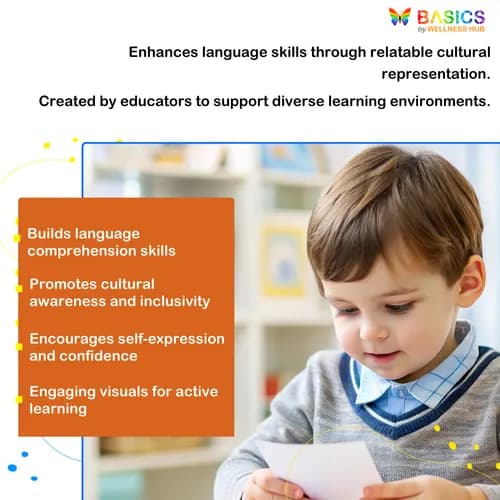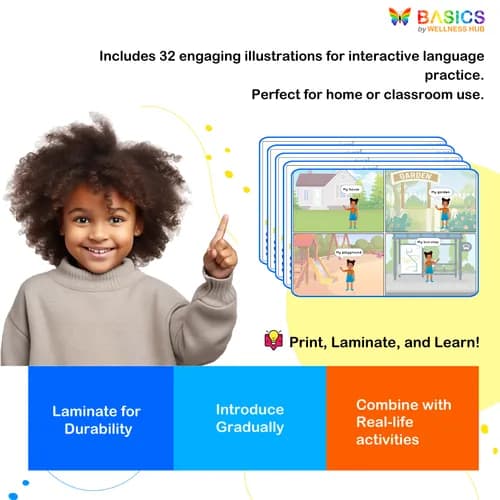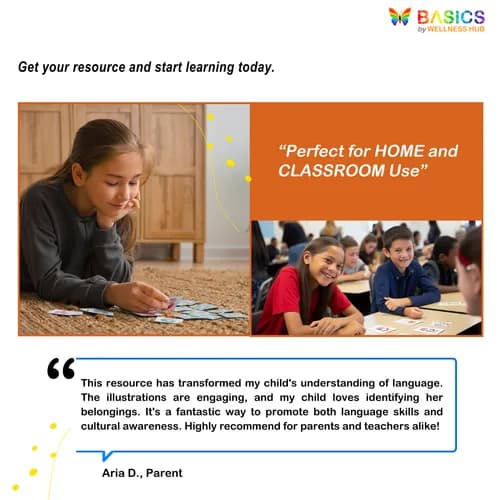




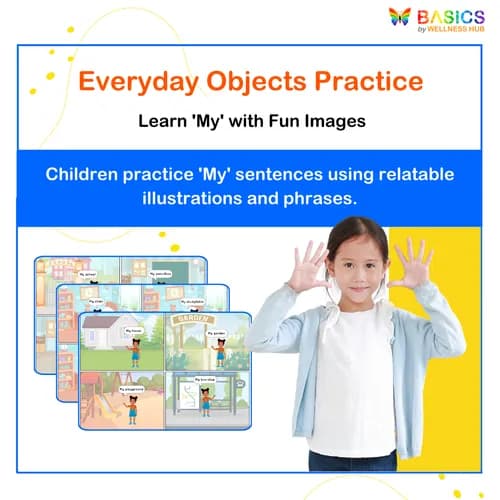
AFRICAN GIRL: Learn “My” with Everyday Objects – Printable PDF
₹80
₹160
50% off
0 (0 ratings)
Grade Levels
Pre-K - Grade 1 (Ages 3-6)
Content Overview
Format: Printable PDF, Total Pages: 8, Features: 32 illustrated pictures with “My” phrases for self-awareness.
Categories
Pages from the Resource
This printable PDF helps children learn to use “My” sentences through relatable illustrations of an African girl with her belongings, family, and surroundings. Each page features 4 pictures with simple phrases like “My bag” and “My mother,” promoting sentence comprehension, grammar skills, and cultural diversity. Perfect for early learners and inclusive education.

Page 1
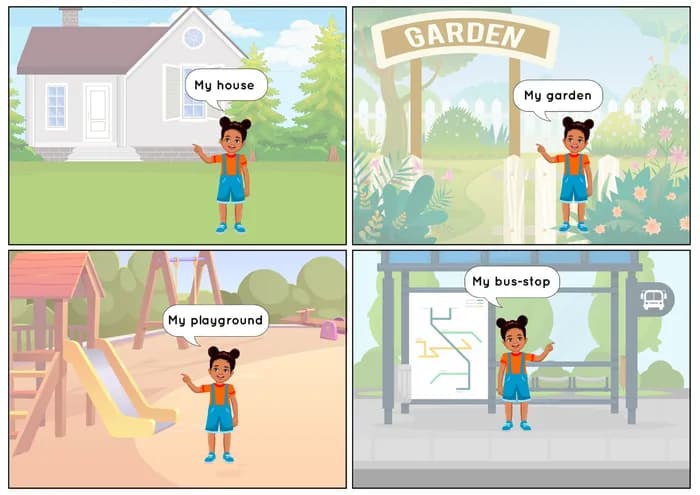
Page 2
What Users Say
0
0 ratings
5
0+
4
0+
3
0+
2
0+
1
0+
5 Stars
Product is Good to use.
1 year ago
Varsha Parent
Similar Products
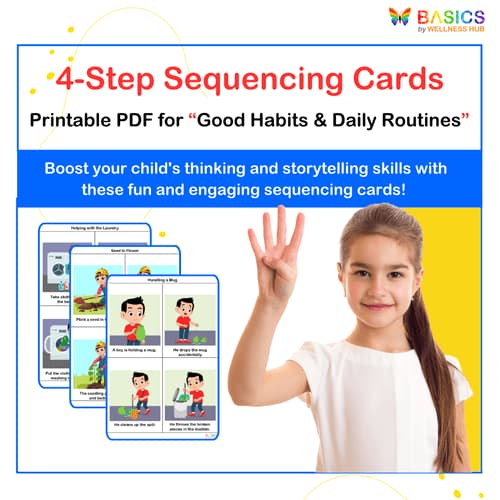
4-Step Sequencing Cards: Printable PDF for Good Habits & Daily Routines
₹ 80.00
₹ 160.00
50% off
4.9 (52 ratings)
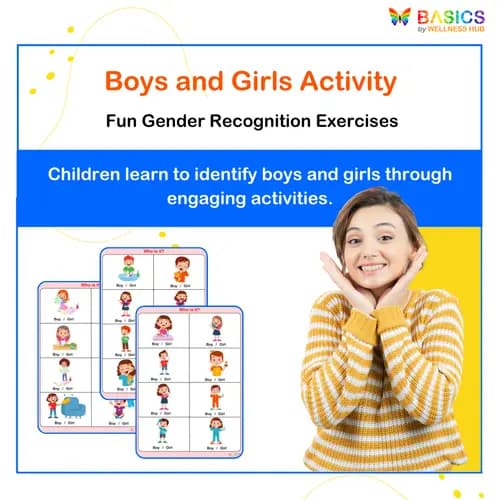
Boys and Girls Identification Activity: Printable PDF for Kids
₹ 80.00
₹ 160.00
50% off
5.0 (56 ratings)

Family Members Flashcards for Kids – Free Printable PDF
FREE
₹160
50% off
4.7 (58 ratings)

THIS IS MY… – Learn Possession & Family Relationships
₹ 80.00
₹ 160.00
50% off
4.8 (48 ratings)
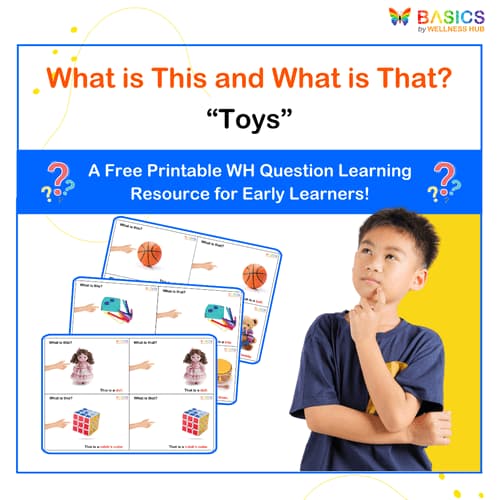
What is This and What is That? - Free Toys Learning PDF for Kids WH
FREE
₹160
50% off
4.8 (54 ratings)
About the Product
Introduction
The AFRICAN GIRL: Learn "My" with Everyday Objects printable PDF is a vibrant and engaging resource designed to help young learners aged 3-7 develop their understanding of possessive language through relatable contexts. Featuring an African girl character, this resource invites children to explore their own belongings, family members, and familiar places while practicing the use of "My" sentences. Each of the 8 pages showcases 4 colorful illustrations that depict the girl interacting with various objects and people, making the learning experience both fun and culturally enriching.
This resource not only enhances vocabulary and sentence structure but also fosters self-awareness and personal connection as children identify items that are meaningful to them. By integrating representation and inclusivity, this PDF promotes cultural diversity, allowing children to see themselves and others in their learning materials. Ideal for use at home, in classrooms, or during therapy sessions, this resource is a valuable tool for parents, teachers, and therapists aiming to support language development and social-emotional growth.
Product Details
- Product Name: AFRICAN GIRL: Learn "My" with Everyday Objects
- Format: Printable PDF
- Total Pages: 8
- Illustrated Pictures: 32 (4 pictures per page)
- Content: Each picture features the girl with a belonging or person, accompanied by a simple descriptive phrase (e.g., "My bag," "My mother").
- Designed For: Early childhood education, language development, and cultural inclusivity.
- Best Suited For: Ages 3-7, preschool, kindergarten, and early elementary settings.
Educational Benefits
1. Enhances Language Development
- Supports vocabulary expansion by introducing children to everyday objects and family members.
- Encourages the use of possessive language through structured "My" sentences.
2. Promotes Self-Awareness and Identity
- Helps children identify their own belongings and relationships, fostering a sense of belonging.
- Encourages personal connections as children relate to the character and her possessions.
3. Fosters Cultural Awareness and Inclusivity
- Introduces children to diverse representations, promoting understanding and appreciation of different cultures.
- Encourages discussions about family and community, enhancing social-emotional learning.
4. Improves Sentence Structure and Grammar
- Teaches children how to construct simple sentences using possessive pronouns.
- Reinforces comprehension of grammar rules in a fun and engaging way.
5. Engages Visual Learners
- Utilizes colorful illustrations to capture attention and aid in memory retention.
- Encourages interactive learning as children point to and discuss the images.
Instructions for Use
Step 1: Print the PDF
- Download and print the AFRICAN GIRL: Learn "My" with Everyday Objects PDF.
- Ensure all 8 pages are printed clearly for optimal engagement with the illustrations.
Step 2: Read Together
- Sit with the child and read through each page, pointing to the illustrations as you go.
- Encourage the child to repeat the phrases after you to reinforce learning.
Step 3: Identify Personal Belongings
- After discussing the illustrations, ask the child to identify their own belongings using "My" sentences.
- For example, "What is your favorite toy? Can you say, 'My toy'?"
Step 4: Engage in Interactive Activities
- Encourage the child to draw or bring in pictures of their own belongings and family members.
- Have them create their own "My" sentences based on these items.
Step 5: Encourage Cultural Discussions
- Use the illustrations as a springboard for discussions about family, community, and cultural diversity.
- Ask questions like, "Who is in your family?" or "What do you like to do with your friends?"
Step 6: Reinforce Learning
- Revisit the PDF regularly to reinforce vocabulary and sentence structure.
- Praise the child for their efforts in using "My" sentences in everyday conversations.
Step 7: Adapt for Different Learning Styles
- Modify the activity for different learners by incorporating movement (e.g., finding items around the house) or auditory elements (e.g., singing a song about belongings).
Activities Using the Resource
1. Picture Identification Game
Objective: Enhance vocabulary and recognition of personal belongings.
How to Play:
- Show a page from the PDF and ask the child to point to each item.
- Encourage them to say, "My [item]" for each picture.
- Rotate pages and repeat with different items.
Skill Development:
- Vocabulary building
- Sentence structure practice
- Visual recognition
2. Create Your Own "My" Book
Objective: Foster creativity and personal connection to language.
How to Play:
- Provide blank paper or a small notebook.
- Ask the child to draw or paste pictures of their belongings.
- Help them write "My [item]" under each drawing.
Skill Development:
- Expressive language
- Fine motor skills
- Personal ownership of language
3. Family Role Play
Objective: Strengthen understanding of family relationships through role play.
How to Play:
- Use the illustrations of family members (e.g., "My mother").
- Role-play scenarios where the child introduces family members using "My" sentences.
- Encourage them to act out simple interactions (e.g., "My mother is cooking").
Skill Development:
- Social skills
- Narrative skills
- Emotional expression
4. "My" Sentence Relay
Objective: Encourage quick thinking and sentence formation.
How to Play:
- Set up a relay where the child runs to a designated spot with a picture.
- They must say a complete "My" sentence before returning (e.g., "My doll is pink").
- Repeat with different pictures to build fluency.
Skill Development:
- Physical coordination
- Sentence fluency
- Quick thinking
5. Cultural Discussion Circles
Objective: Promote understanding of cultural diversity and personal identity.
How to Play:
- After reviewing the illustrations, discuss the significance of each item.
- Ask the child questions like, "What do you have that is similar?" or "What makes your family special?"
- Encourage sharing stories related to their belongings.
Skill Development:
- Critical thinking
- Cultural awareness
- Communication skills
6. Interactive Scavenger Hunt
Objective: Connect language learning to the real world through exploration.
How to Play:
- Create a scavenger hunt list using "My" sentences (e.g., "Find your favorite toy").
- As the child finds each item, they say the sentence aloud.
- Celebrate their discoveries with praise and discussion.
Skill Development:
- Active engagement
- Vocabulary application
- Kinesthetic learning
Frequently Asked Questions
Q1: What age group is this resource intended for?
A1: The AFRICAN GIRL: Learn "My" with Everyday Objects resource is designed for children aged 3 to 7 years old. It is particularly suitable for preschool and early elementary settings, where young learners are developing their understanding of possessive language and building vocabulary related to their belongings and family members. This age range allows children to engage with the material in a way that is both meaningful and developmentally appropriate.
Q2: How can I use this resource to support language development?
A2: This resource encourages children to practice using "My" sentences, which helps expand their vocabulary and improve sentence structure. By identifying their own belongings and relating them to the illustrations, children can enhance their expressive language skills and develop a deeper understanding of possessive pronouns in a fun and engaging way. Additionally, caregivers and educators can use the resource to prompt discussions about family and personal connections, further enriching the learning experience.
Q3: Can this resource be used in group settings or therapy sessions?
A3: Yes, the AFRICAN GIRL resource is versatile and can be effectively used in both group settings and individual therapy sessions. In group settings, children can take turns sharing their "My" sentences, promoting social interaction and collaboration. For therapists, this resource can be integrated into targeted language activities, allowing for differentiation based on each child's unique needs and abilities.
Q4: Is the resource suitable for children with special needs?
A4: Absolutely! The resource is designed to be inclusive and can be adapted to meet the needs of children with various learning differences. For example, visual supports can be used to assist children who may struggle with verbal expression, and the simple sentence structure is ideal for those who are just beginning to grasp language concepts. Caregivers and educators can modify the activities to provide additional support as needed.
Q5: What is the policy for refunds or exchanges if I am not satisfied with the resource?
A5: Wellness Hub strives to ensure customer satisfaction. If you are not satisfied with your purchase, please reach out to our support team within 14 days of your purchase for assistance. We will review your request and provide options for refunds or exchanges based on our policy. Our goal is to ensure that you are happy with your purchase and find it valuable for your needs.
Q6: How do I access the resource after purchasing?
A6: After completing your purchase, you will receive an email with a download link to access the PDF resource. You can download and print the document at your convenience. If you encounter any issues with the download, please contact our support team for assistance. We are here to help ensure that you can easily access and utilize the resource.
Q7: What are the licensing and usage rights for this resource?
A7: The AFRICAN GIRL resource is licensed for personal and educational use. This means you can use it in your home, classroom, or therapy sessions, but it cannot be redistributed or sold. If you are interested in using it for a larger group or organization, please contact us for information on bulk licensing options.
Q8: How can I contact Wellness Hub for support or questions?
A8: You can reach out to Wellness Hub's support team through the contact form available on our website. We aim to respond to all inquiries as quickly as possible, typically within 1-2 business days. Whether you have questions about your purchase, need assistance with a resource, or want to learn more about our services, we are here to help.
Q9: What types of resources does Wellness Hub offer?
A9: Wellness Hub provides a wide range of home therapy resources, including flashcards, worksheets, visual schedules, and interactive digital tools. These resources are designed to support parents and caregivers in continuing progress at home, making therapy more effective and engaging. Our library is continually updated to reflect the latest therapeutic practices and needs of families.
Q10: Is Wellness Hub's therapy accessible for families outside of India?
A10: Yes, Wellness Hub is committed to making high-quality therapy accessible to families beyond India. Our online platform allows for remote therapy sessions, making it possible for families in various locations to benefit from our services. We prioritize privacy and security, ensuring that all sessions are conducted in a safe and confidential environment, regardless of where you are located.
Usage Rights and Restrictions
Allowed Usage:
- Personal use by parents, teachers, and therapists.
- Printable for classroom, home, or therapy settings.
- Can be used in group or one-on-one learning sessions.
Not Allowed:
- Reselling, redistributing, or modifying the resource for commercial use.
- Sharing publicly (e.g., on blogs, social media, or websites) without permission.
- Uploading the file to public sharing platforms.
If you need a bulk license for schools or therapy centers, please contact us.
Conclusion
The AFRICAN GIRL: Learn "My" with Everyday Objects resource is a powerful tool for fostering language development and cultural awareness in young learners. With its engaging illustrations and relatable content, this PDF helps children aged 3-7 practice possessive language while connecting with their own belongings and family members. By using this resource, caregivers and educators can support children in building vocabulary, enhancing sentence structure, and developing a sense of self-identity.
This resource is ideal for use in various settings, including homes, classrooms, and therapy sessions. It encourages interactive learning and meaningful discussions about personal connections and cultural diversity. Invest in this enriching resource today to empower children in their language journey and promote inclusivity in their learning experiences.

